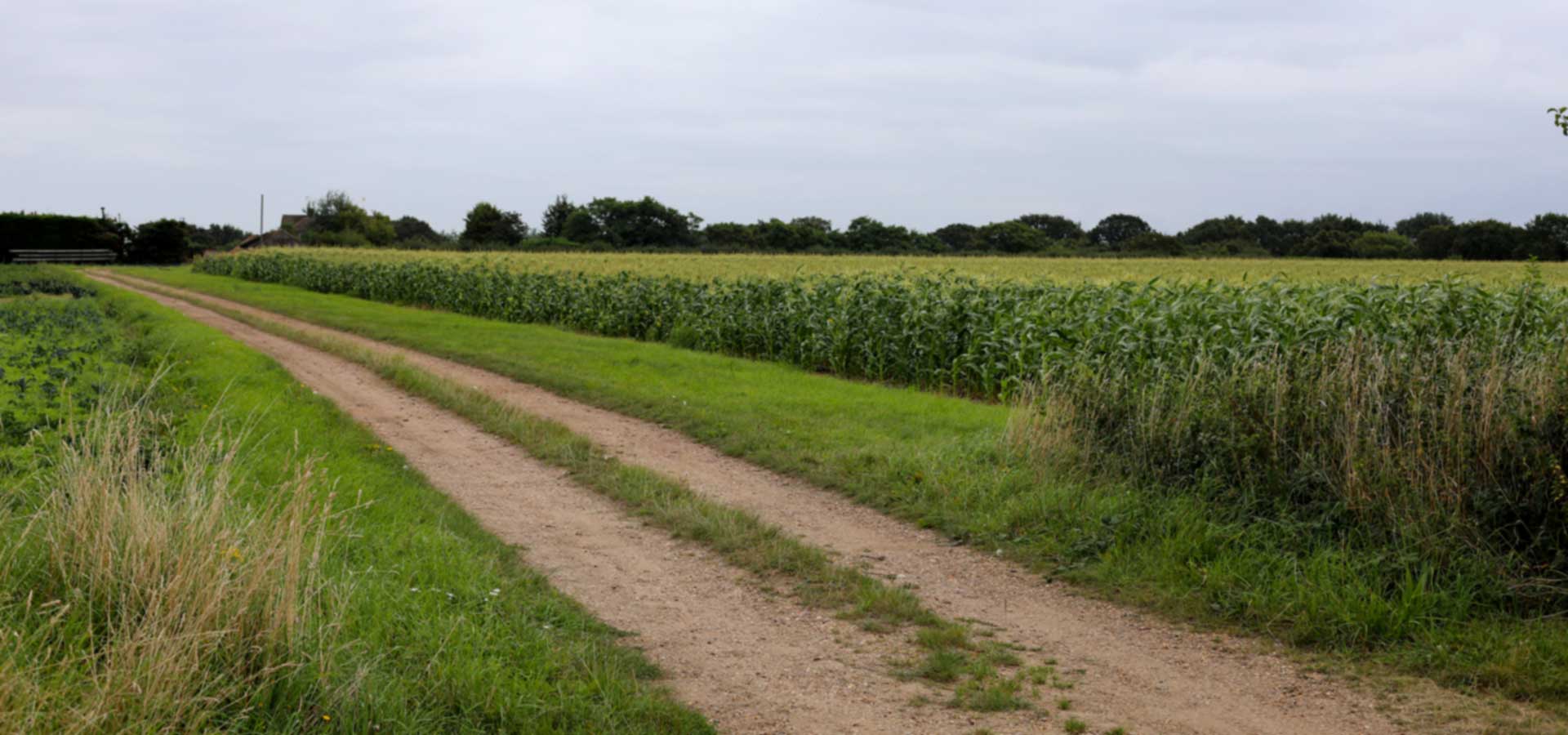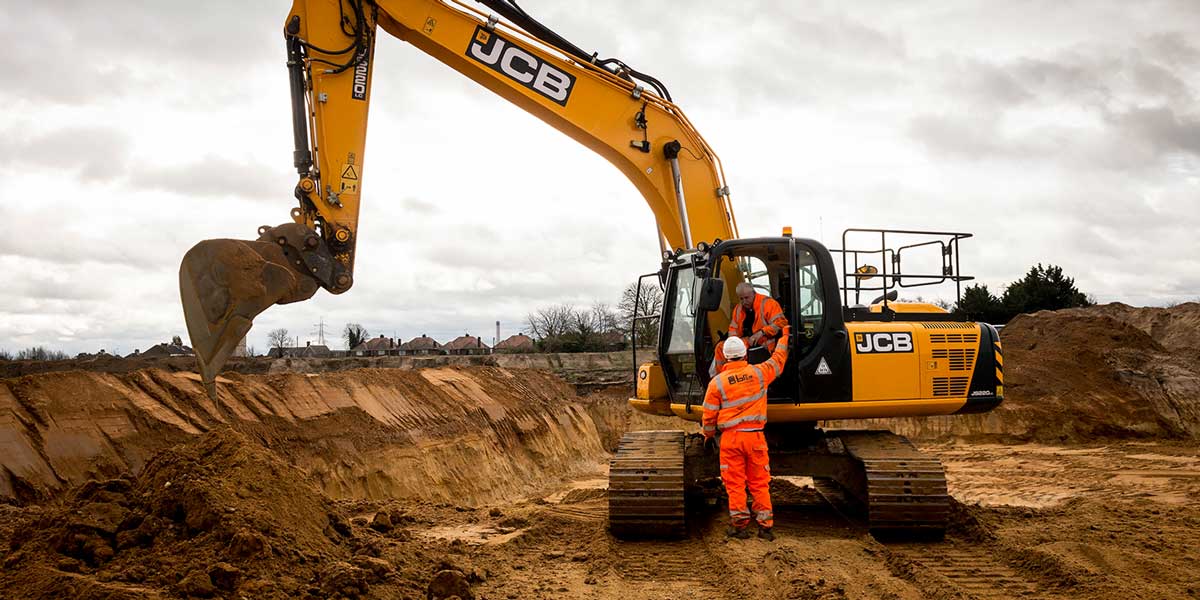
Rainham Lodge Farm
Our proposal is to work and restore the land in phases and process the material at Rainham Quarry.
Rainham Lodge Farm
Our proposal is to work and restore the land in phases and process the material at Rainham Quarry.
An improved proposal
Rainham Lodge Farm is located to the west of Berwick Pond Road and east of the River Ingrebourne.
The development would involve the quarrying of up to two million tonnes of sand and gravel at a rate of about 150,000 tonnes per year. This is typical for a small sand and gravel quarry of this kind. That means quarrying would take place over a period of around 15 to 20 years, including the time taken to fully restore the land and bring it back to original ground levels.
Following consultation, we have significantly reduced the total area of land to be quarried and drawn back the proposed site boundary by up to 100 metres to the north and west of the site. This means that the actual area to be quarried is around 150 metres from the nearest homes and public footpaths. Within this ‘buffer zone’ we will carry out planting of broadleaf woodland in advance of quarrying to help to screen the site.
We have designed the proposal to align with national and local planning policy, mitigating or minimising any potential impacts through a series of comprehensive environmental assessments which form part of our planning application. These are covered in our section on Environmental Considerations.
Red line – perimeter of area of the planning application, including highway improvements along Berwick Pond Road
Blue line – areas not included in our planning application

Phased Working
Besides covering a smaller area, quarry activities would take place over a series of six phases to minimise the area of land that is exposed at any one time and allow for progressive restoration (i.e. restoring quarried land as we go).
At Rainham Lodge Farm this means that much less than half the land would be exposed during a particular period, with the remainder either not yet quarried or already restored.
The sequence of phases can be seen on our Restoration page.

Public Access
A phased approach also enables public access along the existing public footpath that crosses the site for the longest time possible. This footpath would be temporarily diverted around the site for a period before being reinstated during the restoration phase. To enhance the local footpath network, additional paths to the river embankment are proposed, along with a new river crossing to Hornchurch Country Park.

Site Preparation
Once a new site access has been established onto Berwick Pond Road, the first work would be the creation of new habitats to allow any translocation of species identified in the ecological assessment. This would be undertaken under the guidance of ecological consultant, outside of any breeding season for the species in question.
When this is completed successfully, soils known as ‘overburden’ would be removed from the first phase area to reveal the mineral beneath. All soil removal, handling and storage operations would be carried out in the most appropriate season and accordance with the Institute of Quarrying’s Good Practice Guide for Handling Soils in Mineral Workings which is based on Government guidelines.
Soil removal would be undertaken only during concentrated periods of a few weeks (as opposed to constantly throughout the year). Soils would only be moved when they are dry and friable (crumbly) in order to ensure that soil structure is retained. The soils would be moved to form temporary landscaped ‘bunds’ around the perimeter of each extraction area to help screen activities from view and to reduce the chance of noise leaving the site. When required these soils are then reused in the restoration of the worked land after each phase.

Extraction & Transportation
Once the soils are removed from a particular phase of the site, the sand and gravel would then be dug with an excavator over a number of phases in sequence. The material would be loaded onto lorries from a central stockpile for transportation to our processing plant around 1.5 miles away at Rainham Quarry (just off Launders Lane).
These vehicles will pass over a weighbridge and through a wheel wash before joining Berwick Pond Road for the short journey to the processing plant where the material is washed and screened into different sizes, producing a range of aggregates to meet specific construction standards.
Routing of these vehicles has been carefully reviewed and specifically designed to minimise the impact on other road users. For more information relating to the environmental assessment for transport refer to the section Environmental Considerations.

Operating Hours
Following consultation, we have revised the proposed operating times for the site, and we have committed to ensuring that no lorries will shuttle between Rainham Lodge Farm and Rainham Quarry on Saturdays, Sundays or Bank Holidays.
At Rainham Lodge Farm we propose to operate from Mondays to Fridays, 7am to 6pm with Saturday mornings (7am to 1pm) reserved for any maintenance activities. Rainham Quarry itself will operate on weekdays from 7am to 6pm and Saturdays from 7am to 1pm.
Note that these are the maximum operating hours we are proposing. This does not necessarily mean that work on site would take place continuously during these times; there will inevitably be busier and quieter times in a typical week.

Restoration
Each phase of the proposed quarried area would be progressively restored, returning the site to its original land level and a mix of agricultural land and nature conservation areas. This uses imported ‘inert’ soils and clays that cannot otherwise be recycled to in-fill the areas left after the sand and gravel has been removed.
These materials are carefully sourced from construction projects in the area and typically include the kind of material arising when foundations are dug out. This is the same approach that is being applied to East Hall Farm where land is being successfully restored to agriculture.
Note that lorries importing materials will only be doing so on an agreed contractual basis so that vehicle movements are controlled. There will be no ‘spot’ deliveries on materials without prior arrangement.
Our proposal also includes plans for the full restoration of the original Rainham quarry site.
For further details of our award-winning approach to quarry restoration and proposals for the restoration at Rainham Lodge Farm click here.

